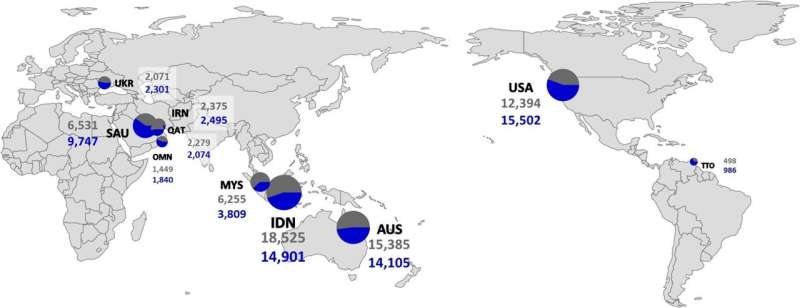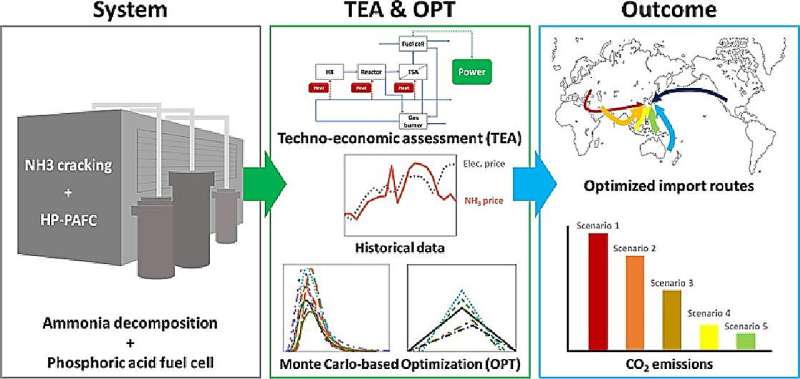This article has been reviewed according to Science X's editorial process and policies. Editors have highlighted the following attributes while ensuring the content's credibility:
fact-checked
trusted source
proofread
New study highlights feasibility and optimization of ammonia-based power generation for carbon neutrality

Ammonia is emerging as a promising energy source to achieve carbon neutrality due to its inherent carbon-free nature. A recent study, led by Professor Hankwon Lim in the School of Energy and Chemical Engineering and the Graduate School of Carbon Neutrality at UNIST, has evaluated the feasibility of ammonia-based power generation through techno-economic and carbon footprint analyses. The research focuses on an integrated system combining ammonia decomposition and phosphoric acid fuel cells.
The study, conducted using a commercial process simulator, unveils significant findings regarding the efficiency and economic viability of utilizing ammonia in power generation systems. Results indicate an impressive energy efficiency rate of 46.7% within the designed power generation process.
Through comprehensive economic analysis, the research team identified an upper limit for ammonia pricing at 421.3 $ tNH3–1 that allows competitive pricing against industrial electricity rates—a crucial factor in determining market competitiveness.
To further optimize ammonia imports into the Republic of Korea (KOR), five distinct scenarios were established based on historical data from the top ten exporting countries. Using the Monte Carlo method for ammonia production costs and carbon dioxide emissions in each nation, researchers optimized import quantities while minimizing overall emissions.
The results demonstrate that if solely reliant on carbon-based ammonia imports, carbon intensity ranges between 0.707–0.736 kg CO2-eq kWh−1—exceeding KOR's average value over a 20-year period. However, achieving a ratio of over 78% of carbon-neutral ammonia (Scenario 4) can make both environmental and economic aspects more favorable.

According to the research team, their findings provide valuable insights into optimizing ammonia exports and reducing carbon intensity. By adopting a holistic approach that encompasses all stages of the supply chain, significant progress can be made towards sustainable energy solutions.
"Our study sheds light on the immense potential of ammonia as an energy source," said Professor Lim. "We have analyzed costs and greenhouse gas emissions while considering different commercialized methods of producing ammonia. Although renewable energy sources were not part of this particular study, our findings offer crucial insights into enhancing ammonia exports and promoting sustainability."
The study findings have been published in Chemical Engineering Journal
More information: Dongjun Lim et al, Expansion and optimization of ammonia import to the Republic of Korea for electricity generation, Chemical Engineering Journal (2023). DOI: 10.1016/j.cej.2023.143492


















